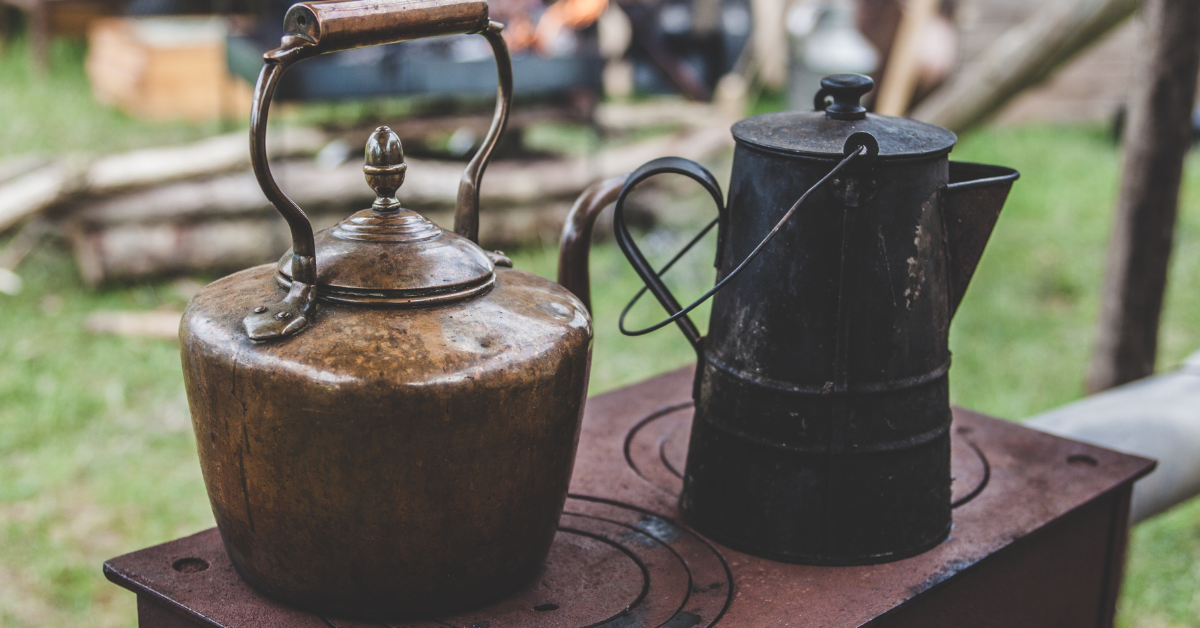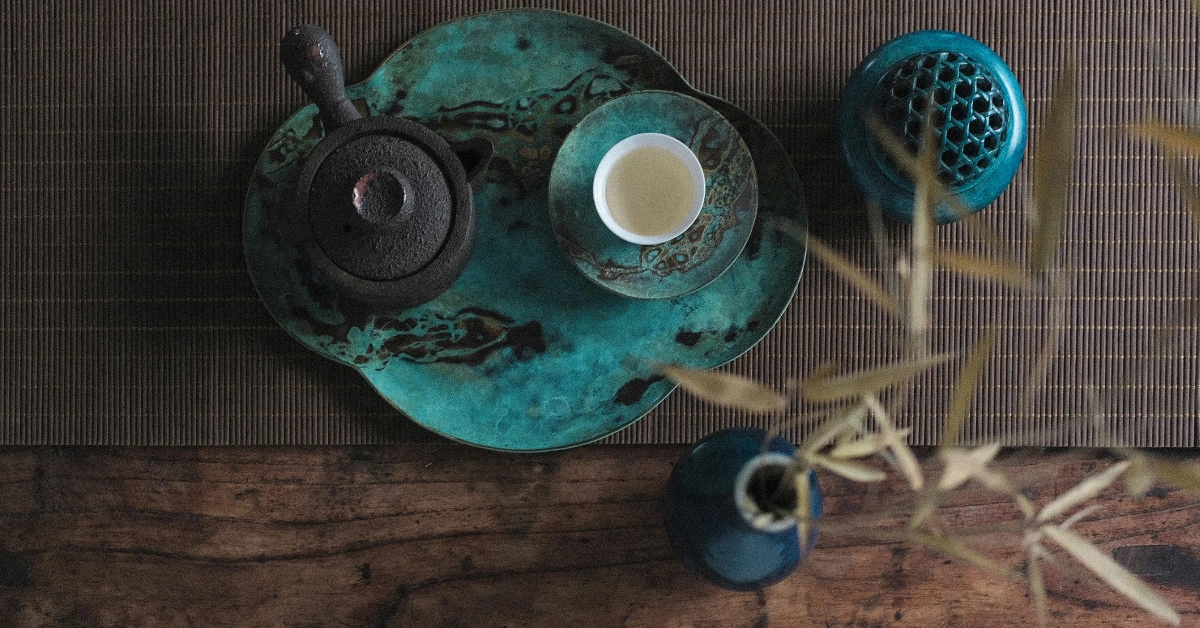
To brew coffee without electricity, use coffee brewing bags. You can also try pour-over coffee or cold brew. French press and Aeropress are two popular ways to brew coffee that do not rely on electricity. Cowboy or Moka pot has also been used for a long time.
Remember that people have been brewing coffee since the 15th century, while electricity was invented in the 19th century. You have a lot of options to brew coffee without electricity. These methods are suitable during power outages and when electricity is unavailable, such as when camping. All you need is hot water and ground coffee for a hot cup of coffee. Or opt for a cold brew coffee if hot water is not available. Don’t panic. We will discuss everything in detail to show you how to do it.
How to Brew Coffee Without Electricity – 10 Easy Ways
Let’s see how to make coffee with no electricity.

Use coffee brewing bags
A coffee brewing bag is a great way to make coffee during a power outage, camping, or traveling. You will find ready-made coffee brewing bags or coffee towels in the local store. A tea bag, clean dish towel, or even napkin will work as well. Follow the steps below.
- Boil the water properly.
- Put two tablespoons of the ground coffee beans into the bag.
- Now pour hot water into an 8oz coffee cup and place the brewing bag in it. Use the bag as a tea bag.
- Wait for 5 minutes and try to shake the bag if possible. It will let the water absorb the flavor better. But don’t overdo it since keeping it for a long time will result in over-brewed coffee.
Try Cold Brew
What if you don’t have boiled water? How to make coffee without heating it? Well, you can try cold brew if equipment or heat source is unavailable. It produces very little bitterness and intense flavor. So, if you want to test the original flavor of coffee, this is your go. Simply mix ground coffee and water and cover it with a lid or board. Wait for 6-12 hours and drink it.
Use solar energy
No, I am not talking about solar panels or solar electricity. Use direct sunlight to heat the water. I know it will not make the water as hot as you want your coffee to be. But this will get the job done somehow. You can also opt for a solar kettle to make the water hotter.
Percolator
A percolator is a coffee-making machine circling the boiled water through a coffee grind. Thus, it brews the coffee. The market is now flooded with electric percolators. But you will find a stovetop percolator that can be used on an open flame or gas stove.
Cowboy Coffee is a great way
Cowboy coffee brewing is a perfect way to take your camping to the next level. Of course, you can do it at home as well. Boil the water properly, put ground coffee into the water, and boil for a few more minutes. Cool it down and drink it.

French Press
The French press is a modern coffee brewing device that steeps coarsely ground coffee in hot water to produce a full-bodied and rich flavor. A plunger separates the ground coffee from the water to ensure accurate texture and taste.
The best part about the French press is that it runs without electricity. The basic operation is this.
- Toss the coarsely ground coffee beans into the pot located inside the press.
- Add hot water.
- Stir it up and wait for a few minutes.
- Now press the plunger to separate the coffee beans.
- Pour the brewed coffee into the cup. You can also add sugar to make it tastier.
Aeropress
Aeropress is a similar coffee brewing machine that works faster than everything. It is a portable device that works without electricity. That means you can use it at home or camping without having electricity.
With a simple push, you can make coffee rich in flavor and taste. Follow the steps below to use an Aeropress brewing device.
- Put the filter in the cap. Then, twist the cap into the chamber.
- Take the mug where you want to have the coffee and place the chamber on the cup.
- Put one tablespoon of smoothly ground coffee beans.
- Shake the level and add hot water. 175F temperature is ideal.
- Now add the plunger and start pressing. Keep pushing until it reaches the last stage.
- You are done. Add more water or sugar to the cup to make it better.
Pour-Over Coffee
Pour-over coffee is a classic and fancy way to brew coffee. But remember that it will not produce high-textured or flavor-enriched coffee. You will find a good-looking decanter or fancy filter to do that. But you are in an emergency, right? You don’t have time to buy them at all. Follow the steps below.
- Take a clean cloth. A tea filter will work as well.
- Put smoothly ground coffee beans in the cloth or filter.
- Now, hold it above a coffee cup and pour hot water into the cup through the filter.
- Make sure you do it as slowly as possible.
- Keep doing it until you fill up the glass.
- Add sugar if needed.
Turkish coffee
Turkish coffee is an old and traditional method of brewing coffee. It involves mixing finely brewed coffee beans with water and sugar and then boiling it properly. Then, pour it into a glass or cup and wait for the ground to settle at the bottom. It produces a strong and aromatic coffee. This is your method if you need to know how to brew coffee manually. But remember that it might taste bitter if you fail to mix an accurate amount of beans.

Moka Pot
Moka pot is another excellent brewing device that works by vapor pressure. It passes hot water through ground coffee with the help of vapor. Follow the steps to operate the device.
- Separate the moka pot into three parts – the bottom basket for water, the middle basket for coffee beans, and the top basket for coffee.
- Coarsely grind the coffee beans and fill the middle basket with them. Make sure they are not as fine as espresso.
- Fill the bottom basket with clean, cold, and filtered water.
- Now, attach the three parts and seal them properly.
- Place the pot into the stove and heat it.
- The heat will create vapor that will pass through the ground coffee beans and be stored in a liquid coffee form in the top chamber.
- Observe it carefully and turn the heat off once coffee fills the top chamber.
- Remove the pot from the stove and use cold water to turn the heat down.
- Pour the coffee into the cup and enjoy.
Make sure you keep the pot clean and nice. Otherwise, it will produce bitter coffee every time you make it. Also, it will not produce a highly concentrated coffee taste like espresso.
A comparison of 10 coffee brewing methods without electricity
| Brewing method | Equipment | Time | Brewing strength | Suitability for camping |
| Coffee Brewing Bags | Bag, Hot Water | Short | Medium | Yes |
| Cold Brew | Container, Coarse Grounds | Long | Mild | Yes |
| Solar Energy | Container, Sunlight | Medium | Vary | Yes (Day time) |
| Percolator | Percolator, Heat Source | Moderate | Strong | No |
| Cowboy Coffee | Pot, Coarse Grounds | Short | Strong | No |
| French Press | Press, Coarse Grounds | Short | Full-bodied | No |
| Aeropress | Aeropress, Hot Water | Short | Concentrated | Yes |
| Pour-Over Coffee | Pour-Over Cone, Hot Water | Vary | Controllable | Yes |
| Turkish Coffee | Cezve, Fine Grounds | Short | Strong | Yes |
| Moka Pot | Moka Pot, Heat Source | Short | Strong | No |
Historical Methods of Coffee Brewing Without Electricity
Historians like William H. Ukers claim that coffee initially originated in Ethiopia. However, it somehow gained popularity in the Ottoman Empire in the 15th century. There is a lot of confusion about how an Ethiopian item gained such popularity in the Ottoman Empire. The journey of coffee brewing started from there.
People from other countries, such as Brazil or Indonesia, also drank coffee back then. But they did not use a brewer machine. Let’s dive into the historical methods of coffee brewing.
Cezve pot or ibrik brewing method

In the 15th century, when the Ottoman Empire expanded to Asia and North America, the Turkish invented the first brewing method using a metal pot named cezve or ibrik. The exact date is still unknown. The Ottoman people used to grind raw coffee beans and mix them with water, spices, and sugar in a cezve pot. Then, they boiled the mixture repeatedly before pouring it into a cup for drinking. This brewing method was popular across the world.
Later in Europe
Later, in the 17th century, the pot model changed. People started using pots with wider bottoms. And in Europe, people started to use pots with sharp pour spouts. It prevents the ground coffee from coming out of the pot, which enhances the taste and texture. The filter was not invented by then.
Filtration method in the 18th century
In 1780, Big pots were invented with a cloth as a filter. The coffee was poured through the cloth or filter. But the taste depended on the coffee finish and type of clothes.
The Era of Metal Filter
Metal filters were introduced in Europe by France in the 1800s. It eradicated the problem with the cloth filters. This is where the idea of the French press came in. In 1852, a modern brewer design was introduced by Mayer and Deforge that shaped the French press we know today.
Percolators
With the development of metal filters and the availability of metal, percolators were developed in the 1800s as well. But the design was slightly different from any traditional French press. Percolators used to use steam pressure to brew coffee located above. A metal filter was through which coffee was poured.
The drip method
The drip method was designed in France in the 19th century after the invention of percolators. It was similar to the Moka pot. There were three chambers, and the middle one was used for ground coffee.
Italian
Since coffee’s popularity flourished in Europe, Italy was not far behind. They invented the Moka pot in 1933. Alfonso Bialetti designed it. Steam was passed through the coffee to produce high-textured smooth coffee.
German
In 1941, a German named Peter J. Schlumbohm developed a new brewer – the Chemex. A flask-like funnel was used in this brewer, and a paper filter was used in the neck of the flask. It produced a cleaner coffee.
Espresso era
After all these transitions, we have got the espresso machine. Yes, it is more than 130 years old. In 1884, the idea of an espresso machine came into the market thanks to Angelo Moriondo, an Italian inventor.
However, the espresso machine was not popular back then. Milanese mechanic Luigi Bezzera, Desiderio Pavoni, and German entrepreneur Melitta Bentz made several design improvements at different times.
Coffee Filters
Today’s espresso machine and other brewers result from the coffee filter invented in 1908, thanks to Melitta Bentz. He invented the paper filters.
Can you use coffee beans without grinding?

Since you don’t have electricity, grinding the coffee beans will surely be challenging. The good news is that you can use coffee beans without grinding. However, it will not produce a rich flavor since the inner flavor is not exposed to the water properly.
At the same time, if you are using any manual brewing method, it will take longer to brew properly due to the thick surface area of the beans.
Conclusion
Brewing coffee without electricity is not that difficult. But we have become so accustomed to using electricity that we cannot imagine something without it. With simple thinking and basic equipment, we can brew coffee and enjoy it even without electricity. I hope this article has given you enough ideas to make coffee during an emergency period. So next time, don’t panic.

I am Mojoon, a certified and award-winning barista by choice, with 7 years of experience in the field. I have served and trained coffee shop baristas worldwide. I worked at Krispy Kreme for an extended period, and now I aim to help regular people brew coffee like me. I pursue this job with my passion for writing and also provide one-on-one coaching for newly minted baristas.